3D Smartphone Face-Off: EVO 3D vs. LG Thrill 4G
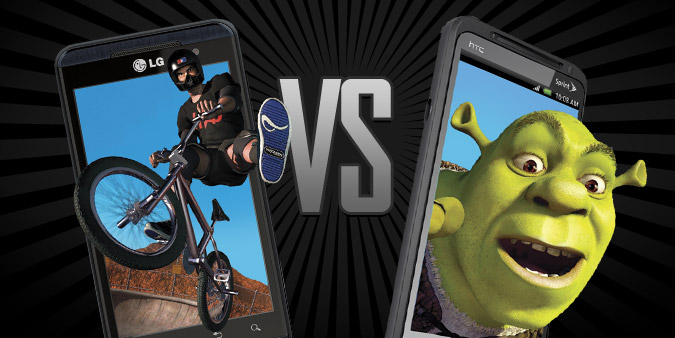
It’s becoming harder and harder for a superphone to get noticed. In a market flooded with handsets boasting dual-core processors, 4G connectivity, and hi-res displays, one surefire way to stand out is to add a glasses-free 3D display. The first two phones with this novel entertainment feature are the HTC EVO 3D ($199) for Sprint and the LG Thrill 4G ($99.99) for AT&T.
Both of these phones let you watch video and play games in 3D. Plus, each device can capture 3D pictures and video using dual-lens cameras. If you like the idea of entertainment popping out of your screen, you may be scratching your head trying to decide between the two phones. To determine which handset makes a better buy, we put the EVO 3D and the Thrill 4G head to head in 10 rounds—from design and the 3D experience to performance and 4G data.
Round 1: Design
Some smartphones with 4.3-inch screens feel unwieldy or slippery, but the EVO 3D’s nicely textured, ridged pattern feels good in your hand. The sides and top have a soft-touch finish that feels rubberized. The all-black design has a nice understated elegance to it, including a red accent around the dual lenses.
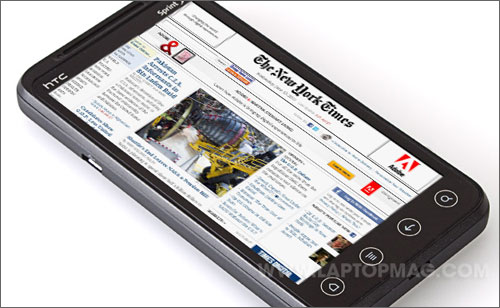
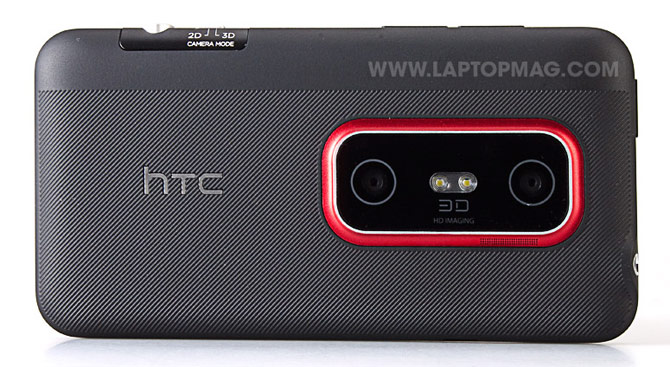
The Thrill’s design is attractive, if not totally unique. The front features a 4.3-inch glossy screen with a thick black bezel that contains the LG symbol and a front-facing camera at the top and four capacitive buttons at the bottom.
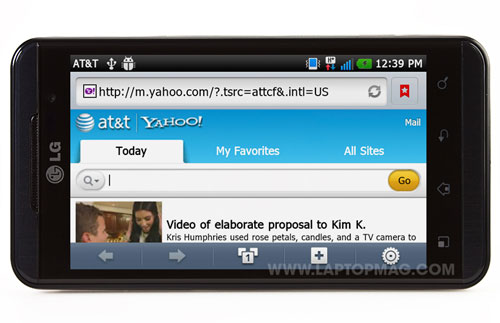
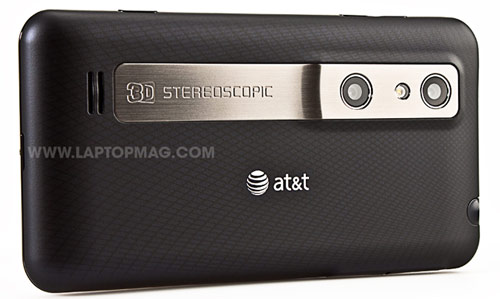
Brushed plastic ends lend a touch of elegance to the front, while a rubberized diagonal pattern and a thin metal strip behind the dual cameras turn up the style volume on the back.
At 5.1 x 2.7 x 0.5 inches and 6 ounces, the Thrill 4G weighs the same as the EVO 3D, but HTC’s device is a little bit more compact at 5 x 2.6 x 0.5 inches.
Stay in the know with Laptop Mag
Get our in-depth reviews, helpful tips, great deals, and the biggest news stories delivered to your inbox.
On the other hand, only the Thrill 4G features an HDMI port for outputting video to a big-screen TV.
Winner: Draw.
While the EVO 3D is sleeker, the LG Thrill 4G sports an HDMI port.
Round 2: Display/Audio
You might think that having a parallax barrier 3D display negatively impacts 2D image quality, but that’s definitely not the case with the EVO 3D. This phone’s 4.3-inch qHD (960 x 540 pixels) screen delivered a crisp and bright picture both indoors and out.
When we pumped The Bravery’s “Above and Below” through the EVO 3D’s back speaker, it easily filled a small room. When you place the phone on a desk, the sound amplifies even more, though you’ll need to dial down the volume to avoid distortion.
The 4.3-inch 800 x 480 screen on the LG Thrill 4G offers bright, sharp images. Whether we were watching videos, surfing the web, or playing games, colors were vibrant and motion was smooth. However, when we watched a 2D high-quality Avatar trailer on both the Thrill and the EVO 3D, the image on the EVO 3D was clearly brighter.
Though no smartphone will ever take the place of a boom box, the LG Thrill’s loud, clear speaker is good enough for group listening. At maximum volume, the Thrill was loud enough to fill a medium-sized living room. When we listened to the guitar-heavy “The Thrill is Gone” by B.B. King, sound was clear and even a bit rich.
Winner: HTC EVO 3D.
A higher-resolution display gives the EVO a leg up in this round.
Round 3: Keyboard
HTC’s keyboard has added Swype-like capability with Trace, a feature that lets users draw a line between letters to quickly type. The software comes in especially handy when you’re typing in portrait mode, since we made more mistakes than we liked when pecking with two thumbs. The larger landscape layout proved more accurate. In both modes we appreciated the subtle haptic feedback.
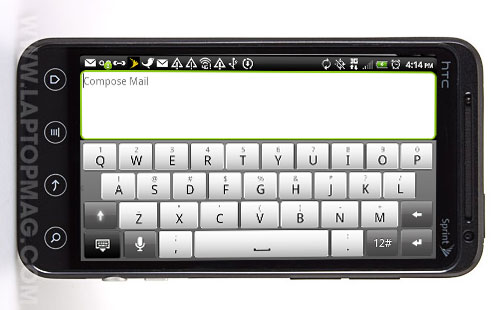
The LG Thrill comes with two virtual keyboards, the stock Android layout and the LG keyboard. The stock Android 2.2 keyboard is enabled by default, and it has large dark-gray keys with white lettering. The LG keyboard with light-gray keys and black writing isn’t that much different, but we preferred it because of its dedicated .com button and added space between the keys. (This made typing a little more accurate.)
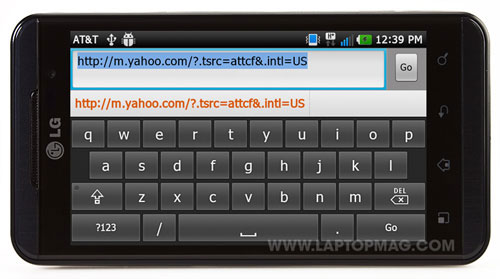
When we ran the Typing Tutor Typing Droid test on each phone, we scored a higher accuracy rating of 84 percent on the Thrill, compared to 79 percent on the EVO 3D. We also typed faster on the Thrill, notching an average speed of 163 words per minute (compared to 152 wpm for the EVO).
Winner: LG Thrill 4G.
Thanks to its larger keys, we were able to peck out messages quicker and with fewer mistakes on the Thrill 4G.
Round 4: Specs and Performance
The 1.2-GHz dual-core Snapdragon processor and 1GB of RAM inside the EVO 3D proved swift in our testing, enabling nifty animations as well as fast app switching. The dual-core Thrill 4G features a 1-GHz TI OMAP 4430 CPU and dual-channel memory, making this one of the fastest Android phones we’ve tested.
On Linpack, an Android benchmark that measures overall performance, the EVO scored 37.7, compared to 43.5 for the LG Thrill 4G.
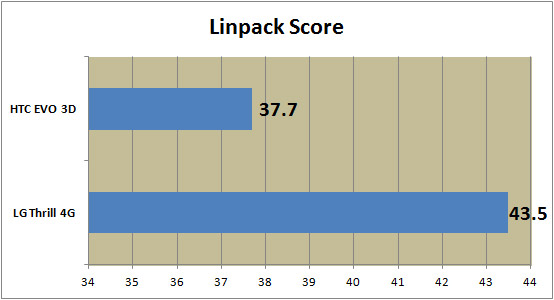
When it came to graphics, the EVO managed a strong 7,118 on the An3DBench benchmark, though the LG Thrill 4G still outpaced it with a score of 7,442.
In everyday use, we found that the Thrill 4G had more than enough oomph to handle demanding games, HD videos, and 3D content.
Winner: LG Thrill 4G.
The Thrill 4G’s stronger benchmark scores put it over the top.
Round 5: Software
The EVO 3D runs Sense 3.0 on top of Android Gingerbread (OS 2.2.3), and the changes to the lock screen alone will make many want to buy this smartphone. On the home screen you’ll find four shortcuts that you can drag into a circle to launch those apps right away. For example, you can go right into your Gmail inbox, start the camera, or fire up the phone dialer all with a swipe. This saves time, and is really a game-changer for Android phones as far as we’re concerned.
The most noteworthy UI feature we encountered on the Android 2.2-powered Thrill was the apps menu, which divides itself into 3D Applications, Applications, and Downloaded Applications. Unfortunately, there’s also an annoying toolbar that sits at the bottom of the web browser, taking up screen real estate.
| HTC EVO 3D (Lock Screen) | LG Thrill 3D(App Menu) |
| Row 1 - Cell 0 | Row 1 - Cell 1 |
Winner: EVO 3D.
HTC’s Sense software provides useful shortcuts to your most-used apps and an attractive interface for scrolling through home screens.
Round 6: 3D Apps and Games
While there’s definitely a narrow sweet spot for getting the best 3D effect on the EVO 3D, it was nice to see a shot of flowers pop. We could definitely see some depth to the image. However, if you tilt the phone from side to side, you get an effect not unlike those old baseball cards that showed two different pictures depending on how you held it.
Sprint pre-loads the EVO 3D with a copy of The Green Hornet 3D. Unfortunately, you have to sign up for an HTC Watch account in order to access the content. We had better luck with the bundled demo of the Ultimate Spider-Man: Total Mayhem 3D game. The 3D effect is adjustable right on the playing screen, and we found slinging webs at the bad guys to be immersive without being distracting.
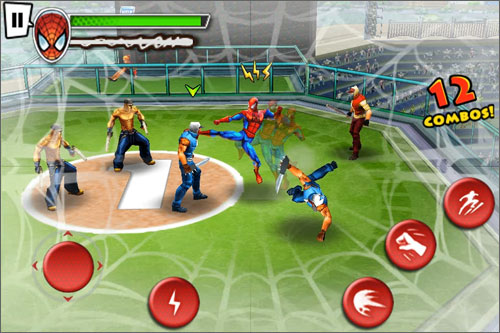
The Thrill 4G’s screen offers sharp glasses-free 3D images that appear to float just above the display. However, to get the 3D effect, you’ll have to move the phone around until you get the proper viewing angle for your position.
LG provides several ways to discover or create 3D content on the Thrill. Hitting the 3D button launches a gorgeous dedicated 3D menu with a ring of five 3D shortcut tiles you can rotate. 3D Games and Apps takes you to a separate 3D apps screen that contains four games by default. We found that the images on Let’s Golf and N.O.V.A 3D offered great depth and were fun to play.
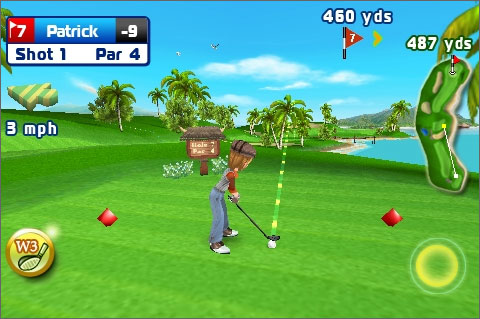
Winner: LG Thrill 4G.
LG wins this round because the Thrill provides a one-stop shop for 3D content.
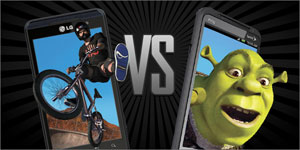
Round 7: 3D Photos and Video
When we shot 3D photos and videos with the EVO 3D’s dual-lens camera and showed them off to friends and family, most of them were pleasantly surprised to see a phone do 3D without glasses. A 3D video shot on our office rooftop displayed vibrant images, but only a few shots really popped.
You can share captured 3D video shot on the EVO on YouTube, which has an increasing selection of 3D trailers and user-generated 3D content. When we tried to play a video on an HP Envy 17 3D, it displayed a split-screen version of our EVO 3D’s footage. However, the notebook did accurately display 3D photos, which really popped when we donned the 3D glasses.
The dual 5-MP cameras on the back of the LG Thrill allow the phone to take both 3D and 2D images or videos. 3D photos were sharp and offered several layers of depth. When we panned the New York City skyline from the same rooftop, objects in the foreground and buildings in the background were more clearly separated than on the EVO 3D. Still, colors were a bit more washed out.
Winner: LG Thrill 4G
Though the EVO 3D offers images with better contrast, the Thrill’s dual cameras offered greater 3D depth, plus the phone can stream photos and videos to a 3D TV via HDMI.
Round 8: 4G Speed
The EVO 3D’s 4G speeds were plenty fast in New York City, where we conducted the bulk of our testing. On four occasions Speedtest.net registered above 8 Mbps downloads, and the handset averaged 6 Mbps. However, as with most Sprint 4G devices, we noticed that speeds dropped off steeply as we ventured away from a window and further indoors. Our only major 4G complaint is that sometimes the EVO 3D lost its 4G connection and forced us to manually scan and reconnect to the network.
The Thrill 4G rides on AT&T’s HSPA+ network, which means that it’s faster than 3G but the slowest and least consistent of the major carriers’ 4G networks. In our New York apartment, the Thrill averaged 2.1 Mbps down and 188.2 Kbps up on Speedtest.net. The speed numbers were much stronger when we tested the Thrill in Atlanta, where it managed 3.4 Mbps down and 648 Kbps up.
Winner: EVO 3D.
When it comes to 4G performance, only the EVO 3D backs up the carrier’s speed claims. Based on our test results, the Thrill is 4G in name only.
Round 9: Call Quality
The EVO 3D delivered clear calls in both New York City and New Jersey. One caller who answered on a landline said we sounded “normal,” which is good because at first she didn’t know we were calling from a cell phone. On our end we heard some fuzziness on the line, which was especially pronounced when listening to hold music when calling a doctor’s office. Some words got broken up as well when we dialed 1-800-TELL-ME and tried to listen to the news.
The LG Thrill offers acceptable audio for outgoing and incoming calls. When we phoned a couple of different friends who were on landlines, we found that incoming audio was mostly accurate, though we experienced a few moments of distortion. When we used a landline to receive a call from the Thrill, the sound was crystal clear. The speakerphone also produced loud, accurate audio.
Winner: Draw.
Both the EVO 3D and the Thrill 4G sounded fuzzy at times, but overall both phones offered clear call quality.
Round 10: Battery Life
Sprint has heard the complaints about the EVO 4G’s short battery life, packing the EVO 3D with a high-capacity 1730mAH battery. Unfortunately, the phone failed to run our battery test to its completion, but if we extrapolate the results, the EVO 3D should last 7 hours and 46 minutes. That’s plenty of endurance to get through the day and well above the 5:49 smartphone average. However, keep in mind that recording 3D video zaps the battery quickly, as does viewing 3D content for extended periods.
When we ran the LAPTOP Battery Test, the Thrill ate through 20 percent of its battery in just an hour. That extrapolates to a battery life of about 5 hours, a bit below the 5-hour and 30-minute category average and far below the 7:46 minute provided by the HTC EVO 3D and the 6:07 of the Samsung Infuse 4G. The Thrill is also rated for up to 6 hours of talk time.
Winner: EVO 3D.
Plain and simple: The EVO 3D will get you through more of the day than the Thrill.
Verdict
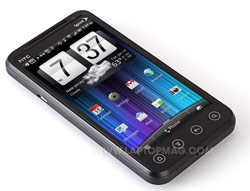
The HTC EVO 3D won three rounds and tied in two, beating the Thrill 4G with its sharper display, speedier 4G performance, more intuitive software, and longer battery life. The LG Thrill 4G won four rounds, edging out the EVO in 3D content, 3D photos and video, the keyboard, and overall phone performance. Both smartphones fought to a draw when it came to design and call quality.
So which handset should be in your pocket? The LG Thrill 4G is a better 3D phone at a more aggressive $99 price. However, what breaks this deadlock is the EVO 3D’s faster 4G data, which is unlimited. On AT&T you’re limited to 2GB unless you sign up for a more expensive plan. You can’t go wrong with either phone, but the EVO 3D is the better overall choice.
| Row 0 - Cell 0 | Row 0 - Cell 1 | Row 0 - Cell 2 |
| Row 1 - Cell 0 | HTC EVO 3G | LG Thrill 4G |
| Design | — | — |
| Display/Audio | X | Row 3 - Cell 2 |
| Keyboard | Row 4 - Cell 1 | X |
| Specs & Performance | Row 5 - Cell 1 | X |
| Software | X | Row 6 - Cell 2 |
| Apps & Games | Row 7 - Cell 1 | X |
| 3D Photos & Video | Row 8 - Cell 1 | X |
| 4G Speed | X | Row 9 - Cell 2 |
| Call Quality | — | — |
| Battery Life | X | Row 11 - Cell 2 |
| Total | 4 | 4 |
